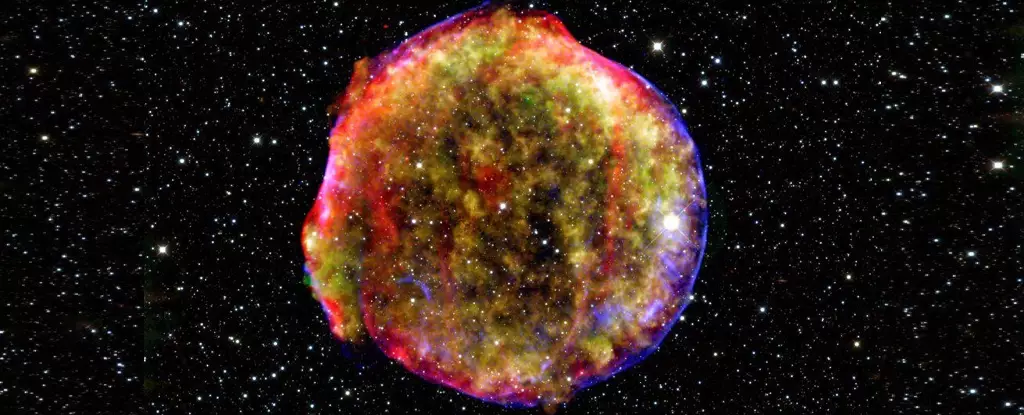The universe, vast and enigmatic, cradles myriad sources of extraordinary energy, yet it still sends us on a cosmic treasure hunt for the origins of some of its most potent forces. Among the leading contenders are the captivating yet violent fireworks of supernovae—stellar explosions that mark the dramatic end of a star’s lifecycle. For over a century, scientists have been on an unrelenting quest to pinpoint the catalysts behind cosmic rays, those enigmatic particles that bombard Earth. Today, however, we must confront a disquieting reality: our understanding of these celestial phenomena may be narrowing. Despite the breathtaking grandeur of supernovae, researchers have found them less capable of producing the high-energy particles known as cosmic rays than previously believed.
Unraveling the Engine of Cosmic Rays
The recent findings regarding Tycho’s star, a historic supernova that dazzled observers back in 1572, suggest a sobering reality that should alarm all who delight in cosmic discoveries. Researchers have unveiled that while this celebrated source of celestial light generates magnetic fields during its violent collapse, these fields are not as potent as current models suggest. The implications of this discovery are profound, as they challenge established theories and lead to more questions than answers: If classic supernovae can’t produce the energy we need to explain the most powerful cosmic rays, what are we left with? Are we naively placing our bets on events that simply do not deliver?
Notably, there exists a rather disheartening irony in our cosmic pursuits. Here we are, grappling with the majesty of stellar explosions, only to find that conditions for these cosmic accelerators to work effectively are far more intricate than imagined. According to a team of dedicated physicists, dying stars have a critical window of opportunity—a fleeting decade or two in their aftermath—where such an explosion could theoretically act as the universe’s accelerator. Should the shell of debris surrounding the star maintain enough density, the shockwave from the supernova has the potential to whip particles into a frenzy of tremendous energies.
Power vs. Potential: The PeVatron Hypothesis
The narrative gets more complicated when discussing the so-called PeVatrons—hypothetical cosmic engines believed to generate peta-electronvolt (PeV) particles. Earth, in fortunate moments, has been struck by these behemoth particles, astonishingly more powerful than even our most advanced scientific endeavors can replicate. But these PeVatrons remain a phantom; are supernovae truly the culprits behind their creation? The theory introduces the tantalizing idea that our understanding of celestial phenomena may need a drastic re-evaluation.
In a lingering sense of curiosity mixed with skepticism, we must ask: if Tycho’s star were to have waited a moment longer, would it have unleashed a torrent of cosmic rays that could redefine astrophysics? The answer remains elusive, floating amidst the stars we gaze at every night. The striking possibility that only young supernova remnants situated in dense environments might fulfill the conditions required for PeV-levels of energy will likely remain an unconsummated fantasy unless we become more meticulous in our observations.
The Call for a Fresh Perspective
As scientists dissect these theories and unveil the humbling truths of our cosmic neighborhood, it becomes clear that our quest for understanding cosmic rays requires more than just observation; it compels us to engage in a broader philosophical discourse about what we think we know. The potential to be fascinated could be overshadowed by realistic caution. This posture lends itself to the realization that as we peer into the cosmos, we must remain vigilant to the prospect that our prevalent models might be misleading, pulling talents and minds into a quagmire of hypotheticals rather than bestowing clarity.
As we navigate this uncharted milieu, the community of physicists and astronomers must embrace skepticism, fervently searching for answers while unearthing unpredictable and perhaps, unsettling truths. The cosmos is relentless in its ability to surprise us; a single discovery can trigger a paradigm shift. As we continue to unravel the complex mechanisms at play, keeping an open mind will likely be our only guarantee against the specter of ignorance.
In this grand galactic theater, supernovae may yet have a starring role, but their performance—and ours—should serve as an intriguing reminder of how much we have yet to learn.

Leave a Reply